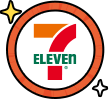《德源科技》r)ShiftBrite V2.0
$423
運費抵用券7-ELEVEN 滿99元運費折抵31元
- 現金付款
- 全家取貨付款
- 7-ELEVEN取貨付款
現金付款
- Yahoo奇摩輕鬆付現金接受付款方式:ATM轉帳 / Famiport / 輕鬆付帳戶餘額
ATM 提供5家銀行:合作金庫、華南銀行、台灣銀行、國泰世華、中國信託,以上5家同行轉帳,免轉帳手續費。
全家取貨付款
— Yahoo奇摩輕鬆付7-ELEVEN取貨付款
— Yahoo奇摩輕鬆付7-ELEVEN取貨付款 — 單件運費$60
全家取貨付款 — 單件運費$60
郵寄掛號 — 單件運費$60
輕鬆付提供價金保管,交易更安心!
商品資訊
下標前請注意: (請先打電話連絡或提問,請見賣方關於我中有聯絡方式)
1.可以開發票
(PS:如合併結帳多項產品或是加購附件及開發票者,使用全家取貨付款的,結標後請自行修改金額)
2.可面交,現貨供應
3.下標後請填寫下列資料
1.帳號:
2.購買物品名稱:(如有很多型號時請註明清楚,謝謝)
3.地址:
4.郵遞區號:
5.郵款金額:
6.姓名:
7.帳號後5碼:
8.連絡電話:
===================================================================
id=6489
※本產品原廠代理從國外進口,有些交期較長,下訂前請詢問!

The ShiftBrite V2.0 is an RGB LED module with a built-in driver featuring 10-bit digital brightness control on each color channel (over one billion colors). Multiple modules can easily be chained together and controlled from a single microcontroller to create large LED displays. This version has several improvements over the original ShiftBrite, including mounting holes and better power handling. This configuration comes with male header pins soldered in.
 |
| A ShiftBrite RGB LED module can display over one billion different colors. |
|---|
 |
Overview
ShiftBrites are modules by macetech that integrate the Allegro A6281 3-channel constant current LED driver with a large, high-brightness RGB LED. Using just three digital output pins and a simple protocol, your microcontroller can control a long chain of these modules. Each ShiftBrite in the chain can be independently changed to any of the 1,073,741,824 possible colors to create dynamic displays and decorations. Adjustable current for each color channel lets you correct for slight differences in brightness. In addition, the LED driver is protected from overheating by automatic over-temperature shutdown.
The ShiftBrite V2.0 is a redesigned version of the original ShiftBrite that offers the following key improvements:
- New mounting ears and large mounting holes for easier installation.
- Better indication of polarity and data direction on both top and bottom.
- Larger power traces for improved power handling and chaining.
- Additional power filtering capacitor.
The ShiftBrite V2.0 comes in two configurations: one with male header pins and one without male header pins. The pin spacing is 0.1", making ShiftBrites compatible with breadboards and perfboards. Our custom six-conductor cables, available in lengths of 6" and 12" and 24", can also be used to easily chain together multiple modules.
The original ShiftBrite and new ShiftBrite V2.0 are pin-compatible and have the same basic functionality, so a mix of original and new ShiftBrites can be chained together on the same strand. Please note that several of the pictures, diagrams, and videos on this page show the original ShiftBrites (with green solder masks); the V2.0 model has a larger PCB with a black solder mask as shown in the main product picture.
Example ShiftBrite applications
Several ShiftBrite applications are shown below, including an example setup using a Micro Maestro as a ShiftBrite controller. In the Micro Maestro example, digital outputs 0, 1 and 2 are used to send the control signals to the clock, latch, and data lines, the enable line is connected directly to GND, and 6 V power to the Maestro is delivered from the ShiftBrite chain. Maestro source code to control a ShiftBrite is available in the Example Scripts section of the Maestro User’s Guide. Our Orangutan robot controllers can also be used to control ShiftBrites, as can the Arduino. Source code for the Orangutan is available at the bottom of this page.
|
|
Using the ShiftBrite V2.0
Since ShiftBrites are controlled by Allegro’s A6281 LED driver, careful reading of the A6281’s datasheet (315k pdf) is recommended. Each ShiftBrite input is buffered and output on the corresponding output pin. This allows you to chain together ShiftBrites without increasing the number of IO pins dedicated to controlling the modules. The picture below shows three ShiftBrites chained together.
 |
| Three ShiftBrites chained together. |
|---|
Our 6", 12", and 24" cables for ShiftBrites make it easy to connect multiple modules, as shown below.
|
|
You can make your own shorter cables with our 3" wires with pre-crimped terminals and our 0.1" 6×1 crimp connector housings.
 |
| Pinout diagram for the ShiftBrite module. |
|---|
Each ShiftBrite has a 32-bit shift register. When a rising edge is detected at the clock in pin (CI), the data in pin (DI) value is shifted onto the first bit of the shift register, and the last bit sets the value of the data out pin (DO). After you have loaded a 32-bit packet into the shift register of each ShiftBrite in the chain, bringing the latch in pin (LI) from low to high causes the data to take effect (changing the color or updating a configuration setting). LI must be brought low again before clocking in additional data.
The data packet format is shown in the picture below. For more details about the data packet format, as well as timing and other electrical parameters, see the A6281 datasheet (315k pdf). You can find further documentation and Arduino sample code at macetech’s ShiftBrite documentation page.
 |
| ShiftBrite packet diagram. The second row shows a color packet, while the third row shows a command packet. |
|---|
To send data to the ShiftBrite, you need to use at least three digital I/O pins (four if you want to use the EI pin). Our Orangutan robot controllers work well for this. Here is some sample code for setting the colors of a chain of ShiftBrites using bit banging on the AVR. The chain can be arbitrarily long, but the changing color pattern will repeat on every sixth module.
| 1 2 3 4 5 6 7 8 9 10 11 12 13 14 15 16 17 18 19 20 21 22 23 24 25 26 27 28 29 30 31 32 33 34 35 36 37 38 39 40 41 42 43 44 45 46 47 48 49 50 51 52 53 54 55 56 57 58 59 60 61 62 63 64 65 66 67 68 69 70 71 72 73 74 75 76 77 78 79 80 81 82 83 84 85 86 87 88 89 90 91 92 93 94 95 96 97 98 99 100 101 102 103 104 105 106 107 108 109 110 111 112 113 114 115 116 117 118 119 120 121 122 123 124 125 126 127 128 129 130 131 132 133 134 135 136 137 138 139 140 141 142 143 | // ShiftBrite communication for the AVR using bit banging. // // Pin Assignments (any four free digital I/O pins will do) // // Data PC2 // Latch PC3 // Enable PC4 // Clock PC5 // // Feel free to modify and use this code for your AVR. #include typedef union ShiftBritePacket { unsigned long value; struct { unsigned greenDotCorrect:7; unsigned clockMode:2; unsigned :1; unsigned redDotCorrect:7; unsigned :3; unsigned blueDotCorrect:7; }; struct { unsigned green:10; unsigned red:10; unsigned blue:10; unsigned command:1; }; } ShiftBritePacket; // colorPacket returns a ShiftBritePacket for setting color brightnesses // // red, green, and blue are brightness values from 0 to 1023. 0 is off, and // 1023 is brightest. ShiftBritePacket colorPacket(unsigned int red, unsigned int green, unsigned int blue) { //Make a packet and initialize all of the bits to zero. ShiftBritePacket shiftbrite_packet = {value:0}; shiftbrite_packet.red = red; shiftbrite_packet.green = green; shiftbrite_packet.blue = blue; return shiftbrite_packet; } // commandPacket returns a ShiftBritePacket for sending commands to the A6281. // // redDotCorrect, greenDotCorrect, and blueDotCorrect lets you control what // percentage of current is flowing to each color diode. // Refer to page 8 of the datasheet for more information. // clockMode lets you set the PWM frequency for the diodes. // Refer to page 7 of the datasheet for more information. ShiftBritePacket commandPacket(unsigned int redDotCorrect, unsigned int greenDotCorrect, unsigned int blueDotCorrect, unsigned char clockMode) { //Make a packet and initialize all of the bits to zero. ShiftBritePacket shiftbrite_packet = {value:0}; shiftbrite_packet.redDotCorrect = redDotCorrect; shiftbrite_packet.greenDotCorrect = greenDotCorrect; shiftbrite_packet.blueDotCorrect = blueDotCorrect; shiftbrite_packet.clockMode = clockMode; shiftbrite_packet.command = 1; return shiftbrite_packet; } void sendPacket(ShiftBritePacket shiftbrite_packet) { for(int i = 1; i < 32 + 1; i++) { //Set the appropriate Data In value according to the packet. if ((shiftbrite_packet.value >> (32 - i)) & 1) PORTC |= (1 << PORTC2); else PORTC &= ~(1 << PORTC2); //Toggle the clock bit twice. PORTC ^= (1 << PORTC5); PORTC ^= (1 << PORTC5); } } void latch() { // Set Latch high PORTC |= (1 << PORTC3); // Set Latch low PORTC &= ~(1 << PORTC3); } void sendColorWheelPacket(unsigned int location_on_wheel) { if (location_on_wheel < 400) sendPacket(colorPacket(400,(location_on_wheel % 400),0)); else if (location_on_wheel < 800) sendPacket(colorPacket(400-(location_on_wheel % 400),400,0)); else if (location_on_wheel < 1200) sendPacket(colorPacket(0,400,(location_on_wheel % 400))); else if (location_on_wheel < 1600) sendPacket(colorPacket(0,400-(location_on_wheel % 400),400)); else if (location_on_wheel < 2000) sendPacket(colorPacket((location_on_wheel % 400),0,400)); else if (location_on_wheel < 2400) sendPacket(colorPacket(400,0,400-(location_on_wheel % 400))); } int main() { // Set all to outputs. DDRC |= (1 << PORTC2); // Data In DDRC |= (1 << PORTC3); // Latch DDRC |= (1 << PORTC4); // Enable DDRC |= (1 << PORTC5); // Clock // Set the Enable output low to enable the ShiftBrites. PORTC &= ~(1 << PORTC4); //Have the ShiftBrites change from red to yellow to green to cyan to blue //to purple and back to red. while(1) { for (int i = 0; i < 2400; i++) { sendColorWheelPacket(i); sendColorWheelPacket((i+400) % 2400); sendColorWheelPacket((i+800) % 2400); sendColorWheelPacket((i+1200) % 2400); sendColorWheelPacket((i+1600) % 2400); sendColorWheelPacket((i+2000) % 2400); latch(); } } //Loop forever while(1); } |






